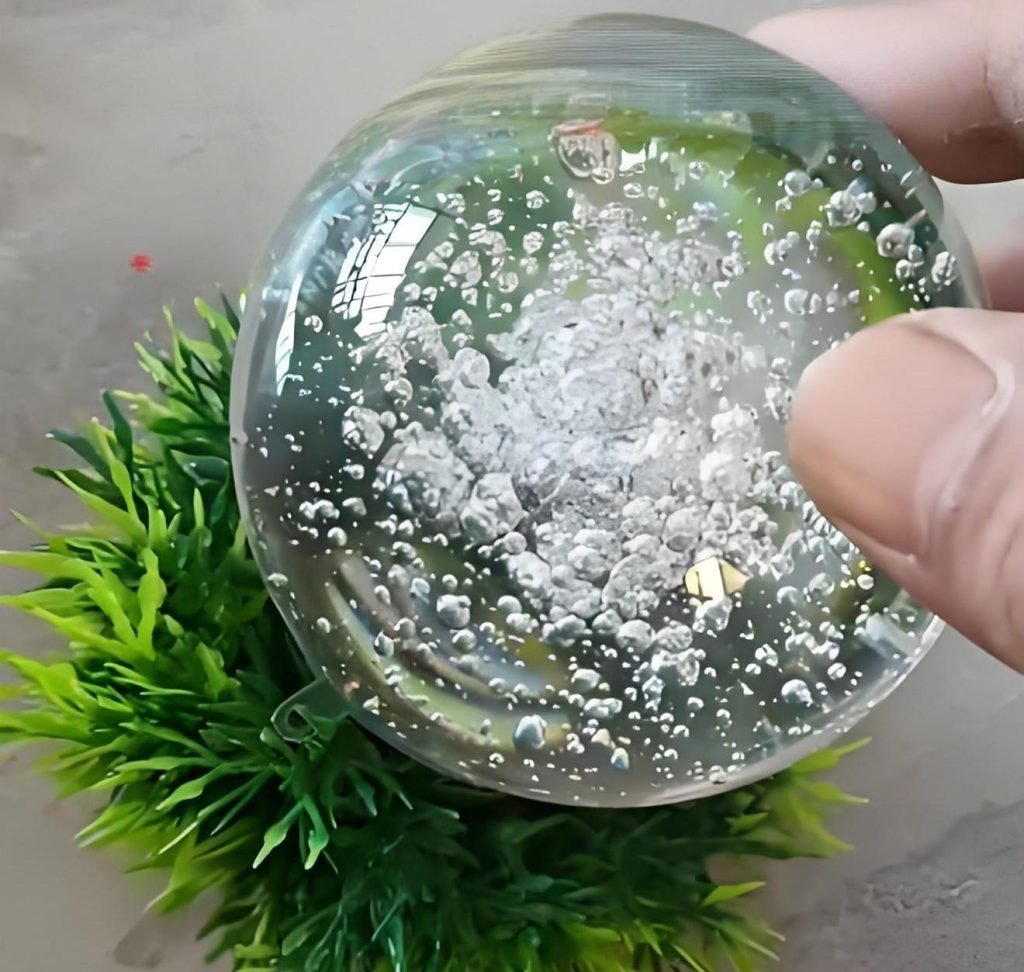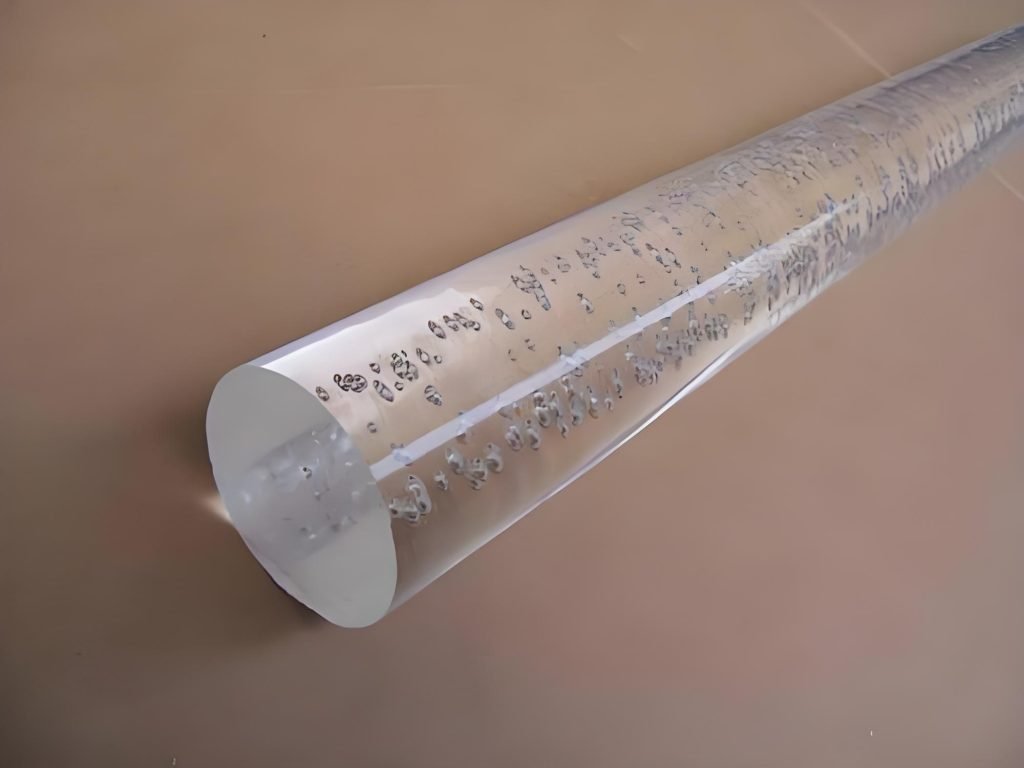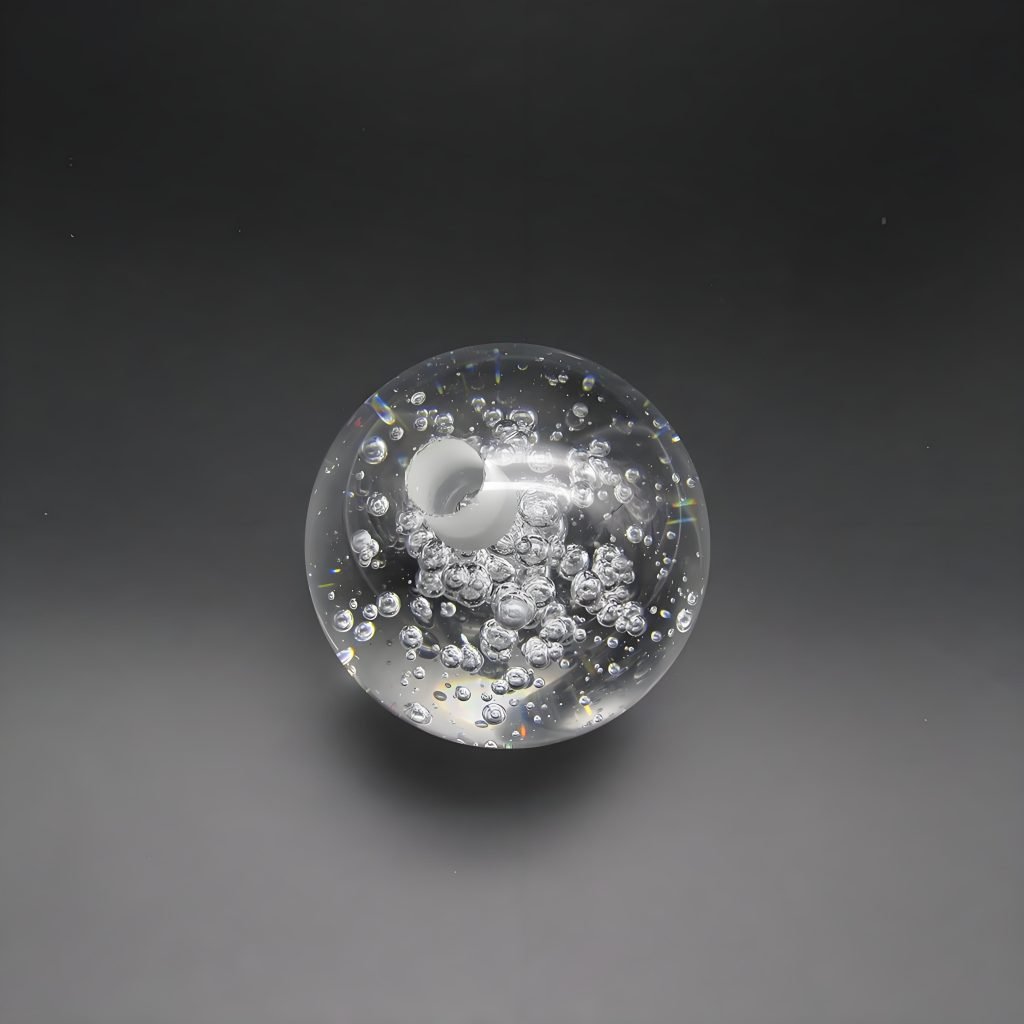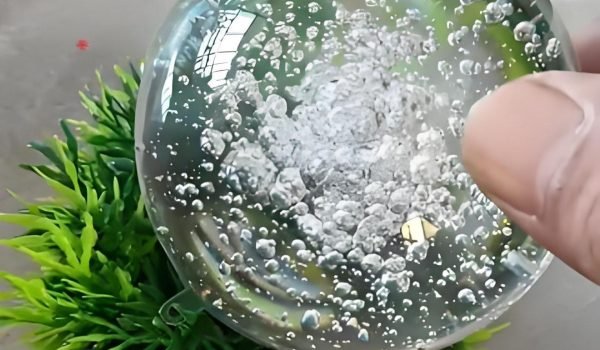Air bubbles can cause significant defects in plastic injection molded products. These defects can weaken mechanical strength, ruin esthetics, and affect functionality, which leads to the most important quality concerns.
These troublesome defects appear at weld lines or towards the end of the filling process, especially when manufacturing larger products. The biggest problem starts as gasses become trapped inside the mold cavity while molten plastic flows through. This trapped gas affects everything from the surface finish to the product’s dimensional accuracy.
The problems are systemic but preventable. Manufacturers can tackle issues that stem from excess moisture in the melt, inadequate mold venting, or uneven cooling. The quickest way to eliminate air bubbles involves implementing targeted strategies. This article explores proven techniques that ensure consistent and high-quality production outcomes in plastic injection molding.

Understanding Air Bubbles in Injection Molding
Defects can ruin even the best-designed products in plastic injection molding. Air bubbles are one of the most common problems that manufacturers need to understand and prevent.
What are air bubbles?
Air bubbles are empty spaces trapped inside molded plastic parts. Air bubbles are voids that become trapped within molded plastic components. They’re different from blisters because you won’t see them bulging on the surface – they stay hidden inside the material. These defects usually come in two main types:
- Trapped gas bubbles: We mostly see these form from trapped air, moisture vapor, or gasses that come from resin breaking down inside the plastic
- Vacuum voids: These happen when plastic shrinks unevenly. The outside layer cools and hardens faster than the inside, especially in thicker sections
You’ll usually find bubbles where two flow fronts meet (weld lines) or right at the end of filling. Clear parts will easily show these air pockets, but opaque materials hide them until you cut into the part or test it.
Why do they occur during the plastic Injection mold process?
Several things can cause bubbles to form in plastic injection molding.
Gasses get stuck because the mold cavity doesn’t have enough venting. The material moves too fast for gasses to escape properly, which forces them into the melted plastic. The material itself can cause problems, too – moisture in hygroscopic materials turns to steam and creates bubbles.
The race track effect occurs when plastic flows through thick sections before filling in the thin areas. This traps air between converging flow fronts. Poor mold design with gates or runner systems in the wrong places disrupts how the material should flow naturally. This creates pockets of trapped air.
Impact of air bubbles on the product
Air bubbles can negatively impact product quality in several ways. They create weak points that reduce the part’s strength and make it less resistant to impact. Even small air pockets can make parts break easily under stress.
Clear parts will show these bubbles as pits or blisters. These look bad and make customers think the product is low quality.
Beyond looks and structure, bubbles create pathways for chemicals to enter the product. This makes the part less resistant to chemicals. Products that need to be airtight or have specific flow paths won’t work right if bubbles disrupt these features.

Root Causes of Air Bubbles in Plastic Injection Molding
Air bubbles in plastic injection molding happen for several reasons. Understanding why it happens helps solve these problems effectively. Let’s look at the main issues that cause these defects.
1) Inadequate mold venting
Bad venting is the biggest problem when making defect-free parts. The melt fills the cavity and traps air without proper escape paths. Smart manufacturers place vent holes in strategic spots to let air escape before the filling material arrives. These vents work best in areas that fill last and where weld lines show up. Complex shapes might need special parts like sintered vents to solve the problem.
2) Incorrect injection speed or pressure
Bubble formation depends heavily on getting injection settings just right. High injection speeds can cause turbulence, which may result in trapped air. The cavity won’t fill properly if there’s not enough pressure. Air stays trapped in the material when the injection pressure is too low or you don’t hold it long enough. High speeds can also create too much shear heat, which might break down the material and trap gas.
3) Improper mold design or gate placement
The mold design has a significant impact on air entrapment. Gates in the wrong spots force air into trapped areas, and small gates don’t let material flow well. You’ll often see type 2 air trap defects from the racetrack effect, where material fills outer areas faster. Air has a hard time escaping, especially when you have deep cavities or sharp corners.
4) Moisture in plastic resins
Plastic resins tend to absorb moisture from the air, so they need to be thoroughly dried before use. Bubbles and surface defects pop up when you use material that’s not dried properly. Following the manufacturer’s drying guidelines helps prevent moisture-related issues. Additionally, even properly sealed materials can hold different moisture levels depending on how they are stored.
5) Insufficient clamping force
The right clamping force keeps the mold sealed tightly throughout the process. Gaps form due to a weak force, and air gets trapped or escapes in the wrong direction. This doesn’t just create bubbles – it can also cause flash and make parts the wrong size.
6) Using incompatible or low-quality materials
Your choice of material plays a big role in bubble formation. Poor-quality or contaminated resins may contain impurities that release gas when heated. Air gets trapped more easily in recycled materials with loose structures. Materials that don’t flow well won’t fill molds evenly. There’s another reason – additives that don’t mix well can create gasses that turn into bubbles during processing.

Preventive Strategies for Bubble-Free Injection Molding
Air bubbles in plastic injection molding can be eliminated by focusing on four key areas: mold design optimization, material preparation, machine settings precision, and maintenance routines.
1) Optimize mold design
The mold’s vents must allow trapped air to escape as the plastic flows into the cavity. These vents need the right depth – enough to release air but not so deep that they cause flash. Positioning vents at the ends of the flow path and along weld lines is most effective. Full-round, parabolic, or trapezoidal runners provide balanced flow.
The gate’s location greatly impacts pressure distribution and the flow pattern during filling. Gates placed near thick sections help proper packing and minimize sinks and voids. Multiple gates create shorter flow paths in thin-walled applications to reduce air trapping.
2) Material preparation
Hygroscopic resins, such as nylon, PET, and polycarbonate, require complete drying because internal moisture can create steam bubbles during processing. The right temperature, airflow, and residence time during drying play a crucial role.
Materials typically require 4-6 hours at manufacturer-specified temperatures with air having a -40°F dew point. High-quality resins with minimal impurities and consistent molecular weight help prevent gas generation during melting.
3) Injection molding machine settings
Controlled injection speeds prevent excessive turbulence while ensuring complete cavity filling. Slower speeds near the end of injection often reduce trapped air. Barrel temperatures need to be carefully controlled to prevent moisture vaporization.
A gradually increasing profile from rear to front zones, with a 50-80°F difference, works best. Proper cooling times allow the material to solidify uniformly, preventing vacuum bubbles caused by differential shrinkage.
4) Maintenance and cleanliness
Blocked vents from residue buildup can be prevented through regular maintenance. Scheduled cleaning with copper gauze and appropriate solvents keeps venting efficiency optimal.
Molds stored in climate-controlled, dry environments between uses stay protected from corrosion that might alter critical dimensions. Specialized mold cleaners, degreasers, and protective agents help extend the mold’s life and ensure consistent part quality.
The Role of Plastic Injection Molding Services
Professional plastic injection molding services provide essential expertise to solve complex manufacturing problems, such as air bubbles. These specialists outperform DIY approaches by using proven methods that eliminate defects one step at a time.
How professional plastic injection molding services ensure quality control
Quality control starts with thorough inspection protocols in professional injection molding. Top molders use scientific techniques to document exact processes for each part and ensure consistent production runs. Their approach controls fill, pack, and hold phases to achieve repeatable results part after part.
Professional services follow structured quality procedures, such as Advanced Product Quality Planning (APQP), with robust inspections conducted at regular intervals. Many companies use advanced systems like IQMS quality management software to monitor production data live. The experts conduct tests throughout development, including moisture content analysis, structural testing, and computerized tomography to find hidden defects.
Benefits of working with experienced mold designers and engineers
Experienced designers and engineers offer valuable advantages:
- They prevent defects early through Design for Manufacturing (DFM) analysis before production starts
- You get access to advanced simulation techniques like mold flow analysis to predict problem areas
- Their material expertise ensures proper resin selection and preparation
- The tooling optimization includes proper venting and gate placement
- OEMs and injection molding engineers work together to reduce costs
Expert engineers assess designs before building to prevent manufacturing errors. Their critical thinking and creativity help solve complex challenges that less experienced manufacturers often miss.
Case study or example of improved results using professional services
A notable example shows how professional injection molding services handled complex analytical equipment housing production. The molders’ project management reduced the number of required molds, which cut capital costs while maintaining quality. Another success story involved medical device components, where professional services fixed air bubble issues. They used vacuum venting to improve both cosmetic appearance and structural integrity.
Quality Checks and Troubleshooting
Early detection and systematic troubleshooting are essential for addressing air bubbles in plastic injection molding processes. Quality checks that are reliable save materials, time, and production costs.
How to detect air bubbles early (visual inspection, x-ray, etc.)
The first step in detecting air bubbles starts with a visual inspection of molded parts to check for surface defects and dimensional accuracy. Many bubbles stay hidden from view and need advanced detection methods. Manufacturers can separate bubbles from voids by applying gentle heat to the suspect area. Bubbles expand as gas heats up while vacuum voids collapse under atmospheric pressure.
X-ray CT scanning gives detailed cross-sectional images that show the exact location and size of bubbles without destroying the part. This method creates a complete 3D visualization and reveals tiny defects within complex shapes. Ultrasonic flaw detection is a simpler option that uses high-frequency sound waves. These waves bounce off internal voids in predictable patterns and take only seconds per test point.
Practical troubleshooting checklist for manufacturers
Bubble defects need this systematic approach:
- Short-shot testing helps identify flow front advancement and possible air trap areas
- Pressure drop analysis during filling shows sudden changes that suggest air entrapment
- Material drying must match manufacturer’s specifications
- Mold venting channels should be checked for blockages or inadequate depth.
- Gate locations and runner designs might have flow issues
- Injection parameters need adjustment—lower speed, better pressure, and fine-tuned barrel temperatures
Importance of continuous process monitoring
Quality control becomes proactive instead of reactive with continuous monitoring. Advanced systems track hundreds of process parameters through all four phases: plasticizing, injection, cooling, and demolding. Modern software spots major process changes and finds potential issues before part quality suffers.
Cavity pressure sensors give up-to-the-minute data about mold filling behavior. These sensors quickly detect short shots or overpacking conditions. Manufacturers can predict and prevent air bubble formation by analyzing these patterns rather than just fixing defects after production.
Conclusion
Air bubbles remain a critical challenge in plastic injection molding that just needs careful attention to several factors. Companies that understand these defects can take decisive steps to prevent them by using proper mold design, preparing materials correctly, and adjusting machine settings.
Professional injection molding services are a great way to get expertise. These services help companies achieve consistent, high-quality results through scientific molding techniques and advanced quality control measures. Continuous monitoring and structured troubleshooting help maintain consistent and reliable results. A comprehensive strategy—combining effective venting, high-quality materials, optimized parameters, and regular maintenance—lays the foundation for producing durable, defect-free parts. With these practices, companies can meet the highest structural and aesthetic standards in the plastic manufacturing industry.




